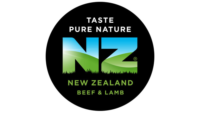Independent research has found New Zealand’s sheep and beef farms are already close to being carbon neutral and strengthens calls for the formal recognition of on-farm sequestration.
The study led by Dr Bradley Case at Auckland University of Technology (AUT) estimates the woody vegetation on New Zealand sheep and beef farms is offsetting between 63 percent and 118 percent of their on-farm agricultural emissions.
If the mid-point in the report’s range is used, on average the woody vegetation on sheep and beef farms is absorbing about 90 percent of these emissions.
Beef + Lamb New Zealand CEO Sam McIvor says absolute greenhouse gas emissions from New Zealand sheep and beef production have reduced by 30 percent since 1990.
“This research shows that of the remaining emissions, the vast majority are being offset by the trees on our farms and New Zealand sheep and beef farmers are well on the way to being carbon neutral by 2050.
The study reinforces the importance of farmers getting formal recognition for the sequestration happening on their farms, says McIvor.
“Currently, most vegetation on sheep and beef farms does not qualify for inclusion in the ETS because it does not meet the definition of a forest. If farmers are to face a price for agricultural emissions, it’s only fair they get credit for their sequestration.
“The focus to date on livestock’s climate change contribution has been on emissions, rather than on sequestration. But with any product it makes sense to consider the whole business – in this case, taking a whole of farm approach.
“The study should also reassure consumers that New Zealand beef and lamb is among the most sustainable in the world, and our farmers are making a significant contribution to addressing on-farm agricultural emissions.
“These findings should be of immense pride for New Zealand’s sheep and beef farmers, the 92,000 people employed in what is New Zealand’s largest manufacturing sector, and all New Zealanders.”
Dr Bradley Case, Senior Lecturer in GIS and Remote Sensing in the Applied Ecology Department, School of Science at AUT, said there is a strong case for farmers to get credit for the sequestration happening on their farms.
“This is an integral part of He Waka Eke Noa, the regulatory framework that industry and government are currently developing to manage agricultural emissions and recognize on-farm sequestration.
“This research not only builds understanding of the overall greenhouse gas contribution of the sheep and beef sector, but will help inform the development of policy, and further reinforce the outstanding biodiversity on sheep and beef farms.”
According to the AUT report, the woody vegetation is made up of 1.52 million hectares of native forest and 0.48 million hectares of exotic vegetation.
In addition to sequestering carbon, this vegetation delivers wider benefits for New Zealand’s biodiversity and freshwater ecosystems.
“The report identifies where sheep and beef farmers can focus on to continue to build the native vegetation and biodiversity on their farms,” says Dr. Case.
“The regional maps in the research indicate where management is most needed to ensure mature/old growth forests are managed to prevent them becoming sources of atmospheric carbon.”
Importantly, the net carbon emissions estimation assumed a net-neutral rate for soil sequestration so the amount of sequestration happening could be even greater.
“While there is fairly good information about soil carbon stocks, there is not good data about yearly changes in soil sequestration and the science on this is still in development.”
About the research
The AUT research was commissioned by B+LNZ. The report was written by Dr Bradley Case and Catherine Ryan and was peer reviewed by Dr Fiona Carswell, Chief Scientist, Manaaki Whenua -Landcare Research and Dr Adam Forbes, Senior Ecologist, Forbes Ecology, Research Associate and New Zealand School of Forestry, University of Canterbury.
The study has not quantified the sequestration taking place on dairy farms, but the findings are helpful for the dairy farmers who do have sequestration happening on their farms and would like to get credit for this. The beef emissions figure in the research includes an allocation for dairy-beef.
The report uses GWP100, because this is the metric used internationally to compare greenhouse gases and it allows researchers to estimate emissions and subtract sequestration on the same basis.
B+LNZ has commissioned research by AgResearch to use this study to calculate a net carbon footprint for New Zealand beef and lamb and to investigate developing a carbon footprint using GWP*, a metric that new research indicates can better reflect the warming impact of different gases on the globe because of the way it accounts for short-lived emissions such as methane.
Read the summary report and the full report on B+LNZ's website here.
Source: Beef + Lamb New Zealand






